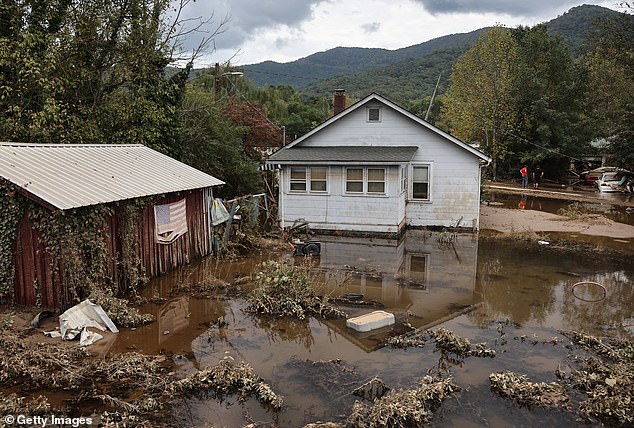Recent natural disasters have exposed how few Americans have flood insurance, and experts are now warning of the potentially devastating impact this can have.
Large swaths of the southeastern United States have been hit by deadly hurricanes in recent weeks. Hard-hit areas of North Carolina are grappling with the ruins left behind by Hurricane Helene, which destroyed homes and caused widespread flooding late last month.
And on the heels of Hurricane Milton’s destructive path through Southwest Florida, residents are now sifting through the wreckage.
The full extent of the damage caused by Milton remains to be seen. But these catastrophic weather events have exposed an alarming gap in coverage for millions of Americans, which could make the road to recovery even more difficult for communities devastated by these storms.
Flood insurance is not included in homeowners insurance and must be purchased separately, something many Americans did not know.
Recent natural disasters have highlighted how few Americans have flood insurance and the potentially devastating impact this can have (pictured: wastewater from Hurricane Helene in Swannanoa, North Carolina).
“We have a broken system to protect people from flood damage,” Douglas Heller, director of insurance at the Consumer Federation of America, told DailyMail.com.
Flood insurance is largely provided by the federal government through the National Flood Insurance Program (NFIP) or through a handful of private insurers.
In some areas, including parts of Florida, flood insurance is required on government-backed mortgages for homes classified as high risk by the Federal Emergency Management Agency (FEMA).
Some banks also require coverage to obtain a mortgage loan in vulnerable areas designated by the agency’s traditional flood maps.
Still, only a staggering 4 percent of homeowners nationwide have flood insurance, according to FEMA.
In western North Carolina, where some areas have been drowned in flooding from Hurricane Helene, it is estimated that less than 1 percent of homes have coverage.
“What is happening will continue to expose the problem of severe levels of uninsured housing, especially in North Carolina,” Heller said.
In Florida, there is also a lot of damage caused by wind and rain, he said, which means some damage may be covered by home insurance.
“I’m concerned that there will be many homes in North Carolina where insurance companies will strongly deny the claim that the damage occurred due to rain or wind and instead say it was all due to flooding.” and they say they don’t cover floods in the home insurance policy,’ he said.
According to FEMA, just one inch of flood water can cause up to $25,000 in damage to a home.
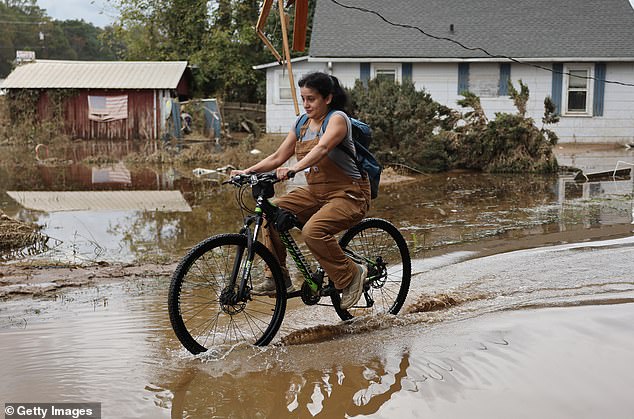
A person rides a bicycle through floodwater left over from Hurricane Helene on October 4, 2024 in Swannanoa, North Carolina.
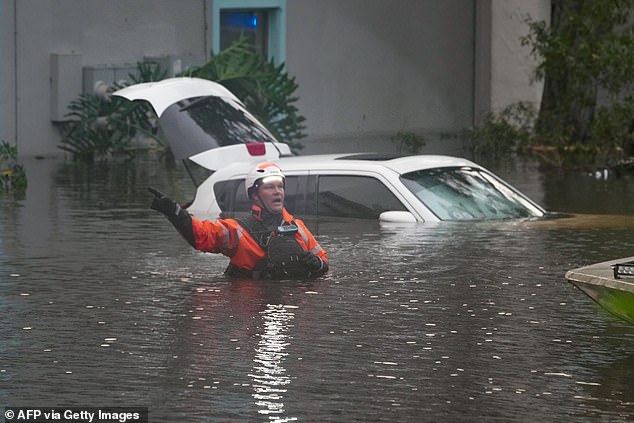
A lifeguard in the water outside a flooded apartment complex after Hurricane Milton on October 10, 2024, in Clearwater, Florida.
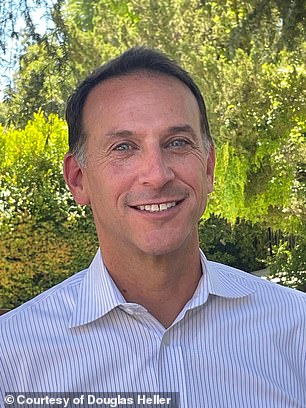
“We have a broken system to protect people from flood damage,” Douglas Heller, director of insurance at the Consumer Federation of America, told DailyMail.com.
There are many reasons why so many homes are foregoing this crucial coverage.
The first is simply that many Americans assume that flood coverage is included in their home insurance.
Others may simply not understand the risk, Heller explained, or outdated flood maps indicate they are not in a high danger zone, so they don’t think they need it.
And even in areas where flood insurance is mandatory, some lenders may turn a blind eye or some homeowners will drop coverage once they’ve paid off their mortgage.
Another reason is that Americans are taking on all kinds of costs, Heller said, and looking to save money whenever they can.
Millions of Americans already live in uninsured households. According to the latest data from 2021, 6.1 million homeowners were uninsured, a number that has likely skyrocketed since then.
On top of this, insurers are increasingly raising prices and withdrawing entirely from states like Florida as the cost of covering rising natural disasters rises.
“When people are looking to save money, they’re not going to add extra insurance,” Heller said.
“In fact, we’ve been advocating for moving all the different aspects of home insurance coverage into one policy, because that’s what people think they’re buying and that’s what they want.”
The average cost of flood insurance from the federal government is $819 per year, according to an analysis by Nerdy Wallet.
This is in addition to the average cost of homeowners insurance in the US, which Insurify projects will rise to $2,522 by the end of 2024.
In Florida, paying more than $10,000 a year for coverage is already the norm, and concerns are growing about the financial stability of Citizens Property Insurance Corp, the state’s insurer of last resort.
The severity of Hurricane Helene’s destruction is likely to have caused between $20 billion and $30 billion in uninsured flood losses, according to a data analytics company. CoreLogic.
It will be the owners’ responsibility to pay for these repairs.
While the extent of the destruction is not yet known, Wells Fargo has estimated that Hurricane Milton could cause up to $100 billion in total losses.
For those who do have flood insurance, it will largely be provided through the federal debtor program, NFIP.
Moody’s estimates that the NFIP will likely suffer losses close to $2 billion from Hurricane Helene alone.
Some lawmakers worry that Milton could push the program to the limit of what it can borrow from the Treasury, which could force Congress to raise its borrowing limit or seek some form of alternative financing. political reported.
The program has a current debt of $20.5 billion.
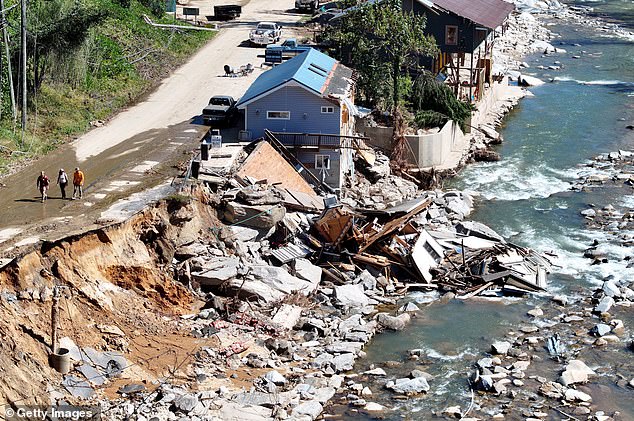
Destroyed and damaged buildings following flooding from Hurricane Helene on October 8, 2024 in Bat Cave, North Carolina
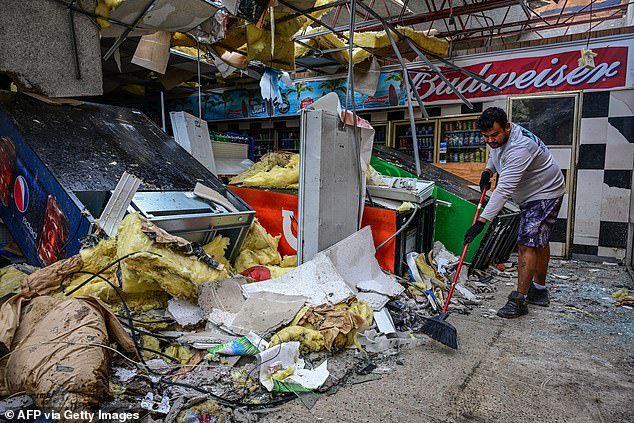
A man cleans debris inside a gas station in Lakewood Park, Florida, after Hurricane Milton.
Allstate CEO Tom Wilson told CNBC on Friday that he believes the federal government needs to “get its act together” to help combat the growing insurance crisis across the United States.
For Heller, the concern is simply how few Americans are actually protected.
“We have a public insurance program meant to serve Americans and the vast majority of Americans don’t have coverage,” he told DailyMail.com.
‘One of the reasons I think Congress hasn’t taken it up is because the insurance industry is more than happy to shift that particular risk onto the government and taxpayers, rather than finding a way to incorporate it into the insurance policy. of the home. ‘
There are so many people after these hurricanes who will not only have suffered the catastrophe of the climate event, he said, but will have to face the disaster that follows when they realize there is no money to rebuild.
“When there’s a flood, it can wipe out a community, and if that community doesn’t have the resources to rebuild, it’s not just a few people who are struggling,” he said.
“It has a ripple effect even on people in the area who weren’t affected by the flood, because it can have an economic effect for years.”
If nothing changes, he fears we will continue to see these “dramatic and terrible” coverage gaps.
‘We cannot afford to simply continue with the same approach to flood insurance that we have used for the last 50 years. It’s not working.’


